INDIA
ONE-STOP GLOBALLOGISTICS PROVIDER
SHIPPING FROM CHINA TO INDIA
As globalization continues to expand, the demand for importing goods from China to India has become a routine necessity for numerous businesses and individuals. Since 2008, China has consistently been India’s top trading partner, a position it continues to hold today. In 2023, the trade volume between China and India reached an impressive 136.22 billion US dollars, with China exporting 117.68 billion US dollars’ worth of goods to India.
This guide offers a comprehensive overview of the process involved in shipping goods from China to India. It covers essential aspects such as the various shipping methods available, the associated costs, estimated transit times, and crucial tips on selecting the right freight forwarder for your needs. Whether you’re a seasoned importer or new to international trade, this guide will equip you with the knowledge needed to navigate the complexities of shipping from China to India efficiently.
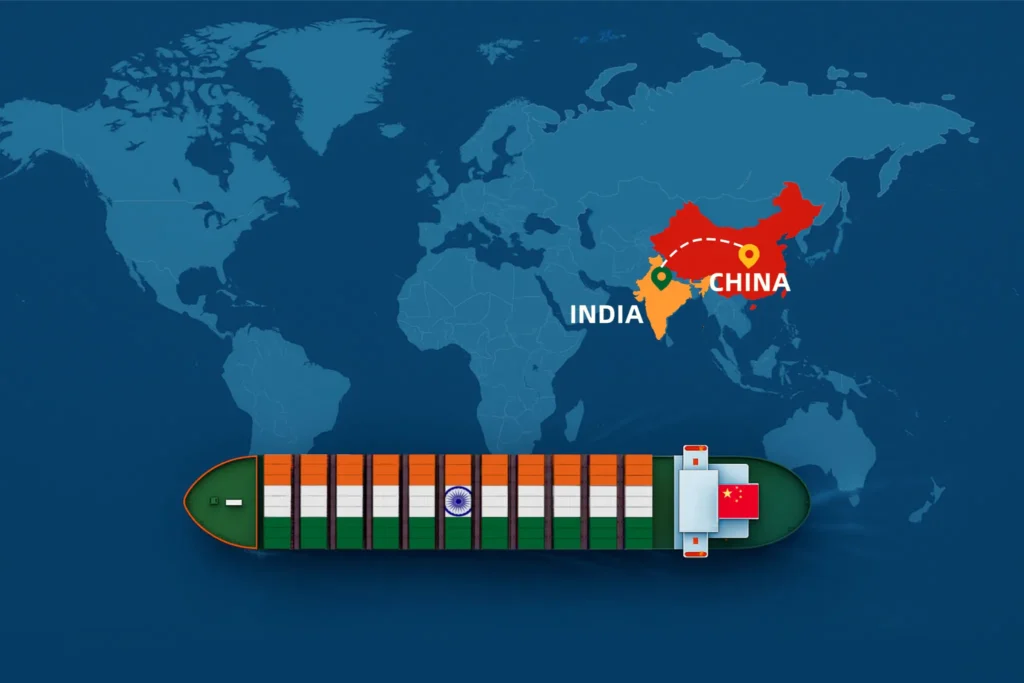
Table of Contents
Shipping from China to India: Comprehensive Guide for Sea Freight, Air Freight, DDP, and Door-to-Door Services
Shipping from China to India is a vital logistics route, driven by strong trade relations and a high demand for Chinese products in India. For businesses looking to import from China, understanding the various shipping methods—such as sea freight, air freight, DDP, and door-to-door services—is essential for selecting the most cost-effective and time-efficient option based on their needs.
Sea freight is ideal for large or bulk shipments, offering a more economical choice for items like machinery, electronics, textiles, and other consumer goods. With multiple Chinese ports, including Shanghai, Ningbo, and Shenzhen, regularly connecting to Indian ports like Nhava Sheva, Chennai, and Mumbai, sea freight enables efficient transit. Although transit times may range from 15 to 30 days, the cost savings make it a preferred method for high-volume goods.
Air freight, on the other hand, is the best choice for time-sensitive or high-value shipments. With major Chinese airports such as Shanghai Pudong International and Beijing Capital International connecting to primary Indian airports in Delhi, Mumbai, and Bangalore, air freight can deliver goods in as little as 5 to 8 days. Though air freight is more expensive than sea freight, it offers reliability for urgent shipments and valuable items.
For businesses seeking a seamless experience, DDP (Delivered Duty Paid) shipping provides an all-in-one solution. Under DDP, the seller takes on all responsibilities, covering shipping costs, import duties, and customs clearance, ensuring a hassle-free experience for the buyer.
Finally, door-to-door shipping combines various transport modes with local delivery in India, offering a convenient option for those looking for end-to-end logistics management. This service includes every step, from pickup in China to final delivery at the consignee’s location in India.
Each shipping option comes with distinct advantages, making it essential for businesses to consider their specific requirements. This guide aims to provide the insights needed to select the best shipping solution for a smooth import experience from China to India.
Sea Freight from China to India
Sea freight is a popular and cost-effective choice for transporting large or bulky shipments from China to India. This mode of shipping is ideal for businesses that require economical solutions for high-volume goods, such as electronics, machinery, textiles, and consumer products. With China and India being two of the world’s largest trading partners, sea freight plays a crucial role in connecting suppliers and buyers efficiently.
Sea freight also provides flexibility through different container options, including Full Container Load (FCL) and Less than Container Load (LCL). FCL is ideal for large shipments that occupy a full container, while LCL allows multiple shippers to share container space, making it a cost-effective solution for smaller cargo.
This shipping method also comes with additional services, such as customs clearance, port handling, and storage options, ensuring that businesses can customize the process to meet their specific needs. For companies looking to optimize costs without compromising on reliability, sea freight remains an essential choice for trade between China and India.
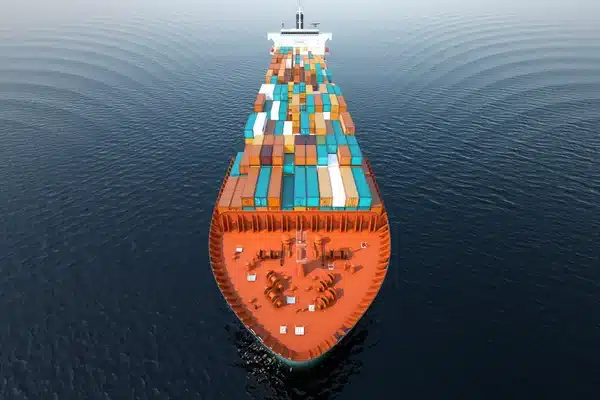
Major Ports for Sea Freight from China to India
When shipping via sea freight, the choice of departure and arrival ports significantly impacts the cost and transit time. Here are the major ports involved in sea freight from China to India:
Primary Departure Ports in China:
Shanghai Port: As one of the busiest and most extensive ports in the world, Shanghai offers a wide range of container shipping options and frequent sailings, making it an essential hub for exports to India.
Ningbo Port: Located in eastern China, Ningbo is known for its efficiency and capacity for handling large volumes, especially useful for high-demand goods.
Shenzhen Port: Serving as a major gateway in southern China, Shenzhen provides competitive rates and regular connections to Indian ports, making it a popular choice for exporters.
Qingdao Port: A key port in northern China, Qingdao is ideal for exporters in that region, offering various shipping options to India.
Key Arrival Ports in India:
Nhava Sheva (Jawaharlal Nehru Port) – Mumbai: Located on the west coast, this is India’s largest container port and handles the majority of shipments arriving from China.
Chennai Port: Serving southern India, Chennai is a vital entry point for goods, with efficient handling facilities for various cargo types, including electronics and machinery.
Mundra Port: Located in Gujarat, Mundra is one of India’s fastest-growing ports and provides excellent connectivity for shipments to the western and northern parts of the country.
Kolkata Port: As a significant eastern port, Kolkata is ideal for shipments destined for eastern India and nearby inland areas.
These ports provide multiple routing options for businesses, allowing them to select the best routes based on location, transit times, and costs. Working with a Tonlexing familiar with these routes can help optimize logistics for shipping from China to India.
How Long is the Sea Freight Transit Time from China to India
Here’s a detailed look at the estimated transit times for sea freight from China to India, based on popular port routes:
| Departure Port in China | Arrival Port in India | Estimated Transit Time |
|---|---|---|
| Shanghai Port | Nhava Sheva (Mumbai) | 15-20 days |
| Shanghai Port | Chennai Port | 18-25 days |
| Shanghai Port | Mundra Port | 15-22 days |
| Ningbo Port | Nhava Sheva (Mumbai) | 16-22 days |
| Ningbo Port | Chennai Port | 20-27 days |
| Ningbo Port | Mundra Port | 17-24 days |
| Shenzhen Port | Nhava Sheva (Mumbai) | 14-19 days |
| Shenzhen Port | Chennai Port | 18-24 days |
| Shenzhen Port | Mundra Port | 15-22 days |
| Qingdao Port | Nhava Sheva (Mumbai) | 20-25 days |
| Qingdao Port | Chennai Port | 22-28 days |
| Qingdao Port | Mundra Port | 20-27 days |
These estimated transit times are influenced by factors like weather conditions, port congestion, and seasonal demand. For a more precise timeline, consulting with a Tonlexing can provide current schedules based on your specific shipping needs.
How Much Does Sea Freight from China to India Cost?
The cost of shipping by sea from China to India can vary based on the port route, container size, and specific shipment details. Here’s a cost estimate for Full Container Load (FCL) and Less than Container Load (LCL) from major Chinese ports to primary Indian ports:
| Departure Port in China | Arrival Port in India | 20ft Container (FCL) | 40ft Container (FCL) | LCL (per CBM) |
|---|---|---|---|---|
| Shanghai Port | Nhava Sheva (Mumbai) | $1,000 – $1,400 | $1,800 – $2,400 | $90 – $120 |
| Shanghai Port | Chennai Port | $1,100 – $1,500 | $1,900 – $2,500 | $95 – $125 |
| Shanghai Port | Mundra Port | $1,050 – $1,450 | $1,850 – $2,450 | $90 – $120 |
| Ningbo Port | Nhava Sheva (Mumbai) | $950 – $1,300 | $1,750 – $2,300 | $85 – $115 |
| Ningbo Port | Chennai Port | $1,050 – $1,400 | $1,850 – $2,400 | $90 – $120 |
| Ningbo Port | Mundra Port | $1,000 – $1,400 | $1,800 – $2,300 | $85 – $115 |
| Shenzhen Port | Nhava Sheva (Mumbai) | $1,100 – $1,400 | $1,900 – $2,400 | $90 – $120 |
| Shenzhen Port | Chennai Port | $1,150 – $1,450 | $1,950 – $2,450 | $95 – $125 |
| Shenzhen Port | Mundra Port | $1,100 – $1,400 | $1,900 – $2,400 | $90 – $120 |
| Qingdao Port | Nhava Sheva (Mumbai) | $1,050 – $1,400 | $1,850 – $2,350 | $90 – $120 |
| Qingdao Port | Chennai Port | $1,150 – $1,500 | $1,950 – $2,500 | $95 – $125 |
| Qingdao Port | Mundra Port | $1,100 – $1,450 | $1,900 – $2,400 | $90 – $120 |
Additional Costs and Considerations
- Customs Clearance Fees: Typically around $80 to $200 depending on the cargo type.
- Port Handling Charges: Usually $100 to $250 per container.
- Insurance: Recommended for high-value goods, approximately 0.2% – 0.4% of cargo value.
- Documentation: Export documents, such as the bill of lading and certificates, cost $30 to $70.
These prices provide economical options for sea freight from China to India. For precise quotes, consulting a Tonlexing will give tailored rates based on your specific needs.
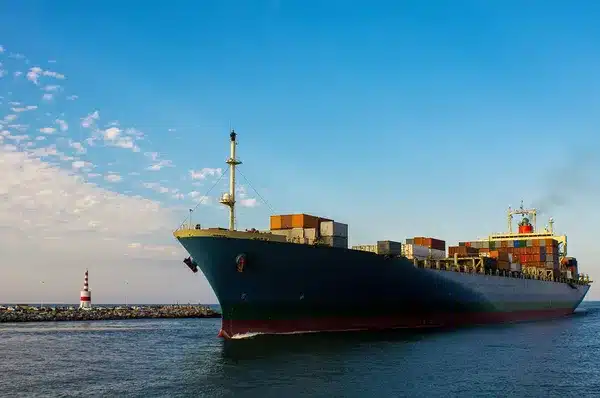
Sea Freight from China to India: Step-by-Step Process
Shipment Booking:
The process begins with choosing a reliable freight forwarder and selecting the shipping service based on your cargo volume, budget, and preferred departure and arrival ports. Once the service is chosen, confirm the booking details and schedule.Cargo Preparation and Packaging:
Proper packaging is essential for sea freight, especially for bulky or delicate items. Ensure that the goods are packed securely according to international standards to withstand transit. Labeling should be clear and compliant with both Chinese and Indian regulations.Documentation Preparation:
Prepare the required shipping documents, including:- Commercial Invoice: Lists details such as cargo value, description, and quantity.
- Packing List: Provides a detailed overview of the goods and their packaging.
- Bill of Lading (B/L): Required for sea shipments as proof of cargo and ownership.
- Certificate of Origin: Sometimes necessary to verify the origin of goods.
- Other Certificates: Additional documents, like fumigation certificates, may be required depending on the product type.
Export Customs Clearance in China:
The freight forwarder submits the documents to Chinese customs for export clearance. Customs officials may inspect the goods to verify the details. Once the shipment passes inspection, it receives clearance for export.Loading and Departure:
After customs clearance, the container or cargo is loaded onto the vessel at the selected Chinese port (e.g., Shanghai, Ningbo, or Shenzhen). The vessel then departs for the designated Indian port, with transit times typically ranging from 15 to 30 days, depending on the route.In-Transit Tracking:
Throughout the sea journey, the freight forwarder provides tracking updates, allowing the importer to monitor the shipment’s status. Tracking helps keep all parties informed about estimated arrival times and any delays.Arrival and Import Customs Clearance in India:
Upon arrival at the Indian port (e.g., Nhava Sheva, Chennai, or Mundra), the cargo undergoes import customs clearance. The freight forwarder submits the required documents to Indian customs, where officials may inspect the goods and assess import duties and taxes.Port Handling and Local Transport:
After clearing customs, the goods are unloaded from the vessel and processed through port handling facilities. Depending on the arrangement, the cargo is either stored temporarily at a warehouse or prepared for immediate delivery to the final destination.Final Delivery:
For shipments with door-to-door service, the freight forwarder arranges local transport to deliver the cargo to the consignee’s address in India, completing the sea freight process.
Air Freight from China to India
Air freight is the optimal choice for businesses needing fast, reliable shipping solutions for high-value or time-sensitive goods between China and India. With transit times averaging 3 to 7 days, air freight ensures rapid delivery compared to other modes of transport, making it especially popular for shipments of electronics, pharmaceuticals, fashion items, and perishable products.
Although air freight typically incurs higher costs than sea freight, it provides unparalleled speed and security for valuable goods. Air freight services often include additional benefits, such as real-time tracking, temperature control options, and strict safety protocols, which are essential for fragile or high-value items.
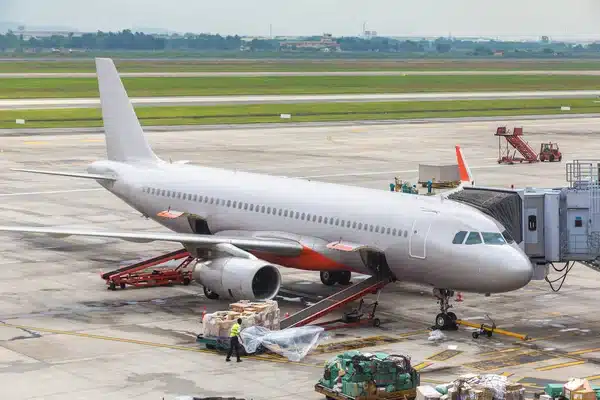
Major Airports for Air Freight from China to India
Selecting the right departure and arrival airports is crucial for optimizing transit time and cost. Here are the primary airports involved in the air freight route from China to India:
Primary Departure Airports in China:
Shanghai Pudong International Airport (PVG): As one of China’s busiest international airports, Shanghai Pudong offers a large number of flights to India, making it a preferred choice for high-volume and time-sensitive shipments.
Beijing Capital International Airport (PEK): Located in northern China, Beijing Capital International connects regularly with major Indian airports, providing reliable services and handling capabilities for various cargo types.
Guangzhou Baiyun International Airport (CAN): Serving southern China, Guangzhou Baiyun is well-suited for shipments originating from that region and offers frequent flights to India.
Shenzhen Bao’an International Airport (SZX): Another key hub in southern China, Shenzhen is ideal for electronic goods and technology products, with efficient air cargo facilities.
Key Arrival Airports in India:
Indira Gandhi International Airport (DEL) – Delhi: As one of India’s main cargo hubs, Delhi’s airport handles a significant volume of imports from China, with well-developed infrastructure for efficient customs clearance and cargo handling.
Chhatrapati Shivaji Maharaj International Airport (BOM) – Mumbai: Located on India’s western coast, Mumbai’s airport is crucial for connecting with China’s major airports, providing reliable services for goods headed to western and southern regions.
Kempegowda International Airport (BLR) – Bangalore: Serving southern India, Bangalore’s airport is an important entry point for high-tech and electronic goods, catering to the needs of India’s technology hub.
Netaji Subhas Chandra Bose International Airport (CCU) – Kolkata: Located in eastern India, Kolkata’s airport is essential for shipments destined for eastern India and nearby states.
These airports provide flexibility for importers to select the most suitable routes based on location, frequency, and handling capabilities, ensuring that shipments from China to India proceed efficiently.
How Long is the Air Freight Transit Time from China to India
Here’s an overview of the estimated transit times for air freight from major airports in China to key destinations in India:
| Departure Airport in China | Arrival Airport in India | Estimated Transit Time |
|---|---|---|
| Shanghai Pudong International (PVG) | Indira Gandhi International (DEL) – Delhi | 3-5 days |
| Shanghai Pudong International (PVG) | Chhatrapati Shivaji Maharaj International (BOM) – Mumbai | 3-6 days |
| Shanghai Pudong International (PVG) | Kempegowda International (BLR) – Bangalore | 4-7 days |
| Beijing Capital International (PEK) | Indira Gandhi International (DEL) – Delhi | 3-5 days |
| Beijing Capital International (PEK) | Chhatrapati Shivaji Maharaj International (BOM) – Mumbai | 4-6 days |
| Guangzhou Baiyun International (CAN) | Indira Gandhi International (DEL) – Delhi | 4-7 days |
| Guangzhou Baiyun International (CAN) | Chhatrapati Shivaji Maharaj International (BOM) – Mumbai | 4-7 days |
| Shenzhen Bao’an International (SZX) | Indira Gandhi International (DEL) – Delhi | 4-8 days |
| Shenzhen Bao’an International (SZX) | Kempegowda International (BLR) – Bangalore | 5-8 days |
These transit times include the standard air freight processing and customs clearance at both ends. Direct flights offer the quickest transit, while shipments that involve transfers or indirect routes may experience slightly longer times. For the most precise and updated schedules, consulting with a Tonlexing is recommended.
How Much Does Air Freight from China to India Cost?
The cost of air freight is influenced by factors such as weight, volume, and service type. Below is an estimate of air freight costs from China to India:
| Departure Airport in China | Arrival Airport in India | Estimated Cost (USD/kg) | Weight Range |
|---|---|---|---|
| Shanghai Pudong International (PVG) | Indira Gandhi International (DEL) – Delhi | $3 – $5 | 100 – 300 kg |
| Shanghai Pudong International (PVG) | Chhatrapati Shivaji Maharaj International (BOM) – Mumbai | $3 – $5 | 100 – 300 kg |
| Shanghai Pudong International (PVG) | Kempegowda International (BLR) – Bangalore | $4 – $6 | 100 – 300 kg |
| Beijing Capital International (PEK) | Indira Gandhi International (DEL) – Delhi | $3 – $5 | 100 – 300 kg |
| Beijing Capital International (PEK) | Chhatrapati Shivaji Maharaj International (BOM) – Mumbai | $3 – $5 | 100 – 300 kg |
| Guangzhou Baiyun International (CAN) | Indira Gandhi International (DEL) – Delhi | $4 – $6 | 100 – 300 kg |
| Guangzhou Baiyun International (CAN) | Chhatrapati Shivaji Maharaj International (BOM) – Mumbai | $4 – $6 | 100 – 300 kg |
| Shenzhen Bao’an International (SZX) | Indira Gandhi International (DEL) – Delhi | $4 – $7 | 100 – 300 kg |
| Shenzhen Bao’an International (SZX) | Kempegowda International (BLR) – Bangalore | $5 – $8 | 100 – 300 kg |
Additional Cost Considerations
- Larger Shipments: For shipments above 500 kg, rates may decrease further to approximately $2.5 – $4 per kg.
- Customs Fees: These vary by product type and value, typically an additional cost.
- Insurance: Recommended for high-value items, generally at 0.2% – 0.4% of the cargo’s value.
- Documentation: Export documentation costs (e.g., airway bills) generally range from $25 to $60.
Air Freight from China to India: Step-by-Step Process
Shipment Booking:
Choose a reliable freight forwarder and book the air shipment. This involves selecting the departure and arrival airports, flight schedule, and confirming cargo weight and dimensions for accurate pricing.Cargo Preparation and Packaging:
Prepare the goods for air transport, ensuring proper packaging and labeling to meet international air freight standards. Fragile or high-value items should be packed securely to prevent damage during transit. Some shipments, especially electronics or perishable items, may require specific packaging or temperature control.Documentation Preparation:
Gather the necessary documents for customs clearance, including:- Commercial Invoice: Details the value, description, and quantity of goods.
- Packing List: Lists packaging details and cargo weight.
- Air Waybill (AWB): This document acts as a contract and receipt for the goods.
- Certificate of Origin: May be required to verify the origin of goods.
- Special Certificates: For restricted or regulated goods, additional permits may be necessary.
Export Customs Clearance in China:
Submit the shipping documents to Chinese customs for export clearance. Customs officials will review the paperwork and may inspect the goods. Once approved, the shipment is cleared for departure.Loading and Departure:
After customs clearance, the goods are loaded onto the designated aircraft at the departure airport, such as Shanghai Pudong, Beijing Capital, or Guangzhou Baiyun. The flight departs for the chosen destination airport in India, such as Delhi, Mumbai, or Bangalore. Air transit times typically range from 3 to 7 days.In-Transit Tracking:
Throughout the journey, the freight forwarder provides tracking updates, allowing the consignee to monitor the shipment’s status. Tracking is especially useful for managing arrival schedules and arranging for customs processing on time.Arrival and Import Customs Clearance in India:
Upon arrival at the Indian airport, the goods go through import customs clearance. The freight forwarder or customs broker submits the required documents, and customs officials may inspect the shipment. Import duties and taxes are calculated based on the cargo’s value and category.Local Handling and Delivery:
Once customs clearance is completed, the goods are transferred to a local carrier or warehouse. If door-to-door service is arranged, the freight forwarder coordinates delivery to the consignee’s specified address within India.Final Delivery:
For shipments with door-to-door service, the goods are delivered directly to the consignee’s location, completing the air freight process.
DDP (Delivered Duty Paid) Shipping from China to India
DDP (Delivered Duty Paid) is an ideal shipping solution for businesses and individuals seeking a hassle-free, end-to-end logistics experience for shipments from China to India. Under DDP terms, the seller assumes responsibility for all aspects of the shipping process, covering costs associated with transport, insurance, import duties, taxes, and customs clearance. This approach allows the buyer to receive goods directly at their location in India without needing to manage the complexities of import regulations, duty payments, or last-mile logistics.
DDP shipping is particularly advantageous for businesses that import high-value goods, regulated items, or sensitive products that require careful handling through customs. By choosing DDP, companies ensure that each stage, from export preparation in China to delivery in India, is managed by experienced professionals, reducing the risk of delays, compliance issues, and unexpected fees. With DDP, goods can be transported via air, sea, or a combination of both, depending on the timeline and budget requirements.
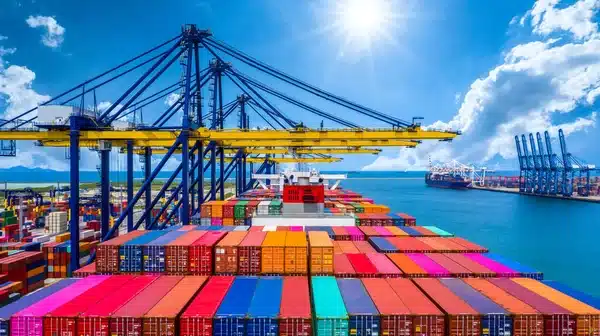
Benefits of DDP Shipping
All-Inclusive Costs: DDP covers all shipping costs, including customs duties and taxes, providing a clear and predictable cost structure.
Convenience: The logistics provider handles the entire shipping process, from pickup in China to final delivery in India, allowing businesses to focus on their core activities.
Ideal for E-commerce: Especially beneficial for small shipments, such as items purchased from Alibaba, Taobao, or other e-commerce platforms.
DDP Transit Time from China to India
The transit time for DDP shipments varies based on the chosen transport method:
| Shipping Method | Estimated Transit Time |
|---|---|
| Air Freight (DDP) | 5-10 days |
| Sea Freight (DDP) | 25-35 days |
- Air Freight DDP: Ideal for urgent or time-sensitive shipments. While air freight is more costly, it provides faster delivery.
- Sea Freight DDP: Suitable for larger, bulk shipments where cost savings are prioritized over speed.
DDP Shipping Costs from China to India
The costs for DDP shipping include all expenses, covering transport, insurance, customs duties, and local delivery to the buyer’s location in India. Estimated costs based on weight and volume are as follows:
| Shipping Method | Estimated Cost Range |
|---|
| Air Freight DDP | $6 – $10 per kg |
| Sea Freight DDP | $2,000 – $3,200 per 20ft container (FCL) or $80 – $120 per CBM for LCL |
DDP (Delivered Duty Paid) Shipping from China to India: Step-by-Step Process
Order Placement and Pickup Arrangements:
The DDP process begins when the buyer places an order and the seller arranges for pickup from the supplier in China. The seller or freight forwarder coordinates the collection from the origin location, such as a warehouse or factory, and ensures that all packaging and labeling meet international shipping standards.Documentation Preparation:
The seller is responsible for preparing and managing the necessary documents for export, which may include:- Commercial Invoice: Details the cargo’s value, description, and quantity.
- Packing List: Lists the contents and packaging specifics.
- Bill of Lading (for sea freight) or Air Waybill (for air freight): Acts as a contract and proof of shipment.
- Certificate of Origin: May be needed to confirm the goods’ origin.
- Additional Certificates: For certain items, such as electronics or chemicals, additional permits may be required.
Export Customs Clearance in China:
The seller handles export customs clearance, submitting all required documents to Chinese customs. Customs officials review the paperwork, and the goods may be inspected before export approval is granted. Once cleared, the shipment is ready for departure.Shipping and Transit (Air or Sea):
The goods are shipped from China to India using the selected shipping method (air, sea, or a combination). The seller arranges and pays for all transit costs, ensuring that the shipment is insured as necessary. Typical transit times vary—air freight averages 3-7 days, while sea freight ranges from 15-30 days.Import Customs Clearance in India:
Upon arrival in India, the shipment is submitted for import customs clearance. The seller, or their logistics provider, presents the documents to Indian customs, where officials calculate and handle import duties, taxes, and fees. Under DDP terms, the seller pays all these import charges, ensuring that the buyer faces no additional costs.Port Handling and Local Transport:
Once customs clearance is completed, the goods are transferred to a local logistics provider for further processing and transport. The shipment may be stored temporarily at a local warehouse or scheduled for immediate delivery based on the buyer’s preferences.Final Delivery to Destination:
The goods are transported to the buyer’s specified location within India. This last-mile delivery is arranged and covered by the seller, ensuring that the buyer receives the goods directly at their doorstep without managing any additional logistics.Tracking and Customer Support:
Throughout the DDP shipping process, the seller or logistics provider offers tracking updates and customer support, keeping the buyer informed about the shipment’s progress and addressing any concerns that arise.
Door-to-Door Shipping from China to India
Door-to-door shipping provides a seamless, all-inclusive solution for businesses and individuals looking to simplify the shipping process from China to India. This service covers every step, from picking up the goods at the supplier’s location in China to delivering them directly to the final destination in India. Door-to-door shipping combines various transport modes—such as sea, air, or rail—with last-mile delivery, creating an end-to-end logistics solution.
This method is particularly valuable for businesses with limited resources for handling customs, documentation, and coordination at each shipping stage. With door-to-door service, everything from export customs clearance in China to import processing in India is managed by a single logistics provider, offering an efficient and hassle-free experience.

Benefits of Door-to-Door Shipping
Convenience: The entire process is managed by the logistics provider, including customs clearance at both ends.
Transparent Pricing: A single quote covering all fees, eliminating hidden costs.
Perfect for Small Shipments: Particularly suitable for e-commerce orders and small businesses.
Door-to-Door Transit Time from China to India
| Shipping Method | Estimated Transit Time |
|---|---|
| Sea Freight (Door-to-Door) | 25-35 days |
| Air Freight (Door-to-Door) | 5-10 days |
| Rail-Sea Combined (Door-to-Door) | 20-30 days |
- Sea Freight: Ideal for large or bulk shipments where cost savings are prioritized.
- Air Freight: Best for urgent, time-sensitive, or high-value shipments.
- Rail-Sea Combined: Offers a balance between speed and cost, with slightly faster transit than sea alone.
Door-to-Door Shipping Costs from China to India
| Shipping Method | Estimated Cost Range |
|---|
| Sea Freight (Door-to-Door) | $1,800 – $2,800 per 20ft container (FCL) or $80 – $120 per CBM for LCL |
| Air Freight (Door-to-Door) | $5 – $8 per kg |
| Rail-Sea Combined (Door-to-Door) | $100 – $150 per CBM |
Additional Considerations
- Customs Clearance Fees: Included in door-to-door pricing for both export and import processes.
- Insurance: Typically included for full coverage of cargo value.
- Documentation Fees: Managed by the logistics provider to ensure compliance with import/export regulations.
Door-to-Door Shipping from China to India: Step-by-Step Process
Order Placement and Pickup Arrangements:
The door-to-door process starts when the buyer places an order with a logistics provider or freight forwarder. The provider arranges for pickup at the supplier’s location in China, whether it’s a warehouse or manufacturing facility, ensuring that the goods are packed and labeled according to international shipping standards.Documentation Preparation:
The logistics provider prepares all necessary documentation, including:- Commercial Invoice: Lists the value, description, and quantity of goods.
- Packing List: Details the contents, weight, and packaging specifics.
- Bill of Lading (for sea freight) or Air Waybill (for air freight): Serves as proof of shipment.
- Certificate of Origin: May be required for certain goods to confirm origin.
- Other Certificates: Additional permits or certificates for restricted or regulated items.
Export Customs Clearance in China:
The provider handles export customs clearance, submitting all required documents to Chinese customs. Customs officials may inspect the goods before granting export approval. Once cleared, the shipment is ready for transport.Transportation from China to India (Air, Sea, or Rail-Sea):
The goods are shipped from China to India via the selected mode (air, sea, or rail-sea combination). During transit, the logistics provider oversees the shipment and offers tracking updates to ensure smooth progress. Transit times vary:- Air Freight: 5-10 days
- Sea Freight: 25-35 days
- Rail-Sea Combined: 20-30 days
Import Customs Clearance in India:
Upon arrival at the Indian port or airport, the shipment goes through import customs clearance. The logistics provider handles all necessary documentation and pays any applicable duties and taxes, ensuring compliance with Indian import regulations.Port Handling and Local Transport:
After customs clearance, the goods are moved from the port or airport to a local distribution center or warehouse. The logistics provider arranges local transport, either for temporary storage or immediate dispatch based on the delivery schedule.Last-Mile Delivery:
The final leg of the journey involves delivering the goods directly to the consignee’s specified location within India. The logistics provider manages this last-mile delivery, ensuring that the shipment reaches the final destination safely and on time.Tracking and Support:
Throughout the door-to-door shipping process, the logistics provider offers real-time tracking and customer support, keeping the buyer informed about the shipment’s status and addressing any potential issues.
Customs Clearance and Duties for Shipments from China to India
Customs Clearance Process in India
Document Preparation: Essential documents for Indian customs clearance include:
- Commercial Invoice: Specifies the value, description, and quantity of goods.
- Packing List: Details the contents, weight, and packaging of the shipment.
- Bill of Lading (B/L) or Airway Bill (AWB): Required for sea or air shipments, serving as proof of shipment.
- Certificate of Origin: Sometimes required to confirm the origin of goods.
- Import Licenses or Permits: Needed for restricted or regulated items such as electronics, chemicals, or pharmaceuticals.
Customs Submission: The logistics provider or customs broker submits these documents to Indian customs for review. Customs officials check for accuracy and compliance with Indian import regulations.
Inspection and Verification: Customs may conduct a physical inspection of the goods, especially for high-value, sensitive, or restricted items. This step ensures that the goods match the details declared in the documentation.
Approval and Release: After successful clearance, customs releases the goods for local transportation, either to a warehouse or directly to the consignee’s address.
Import Duties and Taxes in India
Indian customs applies import duties based on the CIF (Cost, Insurance, and Freight) value of the goods. Here’s a breakdown of the key components:
Basic Customs Duty (BCD): This duty is applied at varying rates depending on the product’s HS code, usually ranging between 5% and 20%.
Integrated Goods and Services Tax (IGST): Calculated on the CIF value plus Basic Customs Duty, IGST is generally 18%, although it can vary depending on the item’s classification.
Social Welfare Surcharge: A surcharge of 10% is added to the Basic Customs Duty for most products, which contributes to the total duty amount.
Example Import Cost Calculation
For a product with a CIF value of $10,000, here’s how import costs would be calculated:
- Basic Customs Duty (10% rate): $10,000 x 10% = $1,000
- Social Welfare Surcharge: 10% of Basic Customs Duty = $1,000 x 10% = $100
- IGST (18% rate): Applied on CIF + BCD + Surcharge = ($10,000 + $1,000 + $100) x 18% = $1,998
- Total Import Cost: $1,000 (BCD) + $100 (Surcharge) + $1,998 (IGST) = $3,098
Tips for Smooth Customs Clearance
- Accurate Documentation: Ensuring all paperwork is complete and accurate can help avoid delays.
- Correct Classification: Using the correct HS code determines the duty rate and helps prevent compliance issues.
- Work with an Experienced Customs Broker: A broker can navigate complex regulations and ensure a smooth customs clearance process.
Choose Tonlexing for Reliable Shipping from China to India!
At Tonlexing, we specialize in comprehensive, tailored shipping solutions from China to India. Whether you need cost-effective sea freight, fast air freight, all-inclusive DDP, or door-to-door convenience, we provide end-to-end services with attention to detail and reliability. Our experienced team manages each step—from pickup to final delivery—ensuring that your cargo arrives on time, safely, and without the hassle.
Contact Tonlexing today for a personalized quote and experience a seamless shipping process with our expert support. Let us take care of the logistics while you focus on growing your business!
Frequently Asked Questions (FAQs) about Shipping from China to India
Sea freight is generally the most affordable method for shipping large or bulky items. For time-sensitive goods, air freight is faster but more costly.
- Sea Freight: 25-35 days
- Air Freight: 5-10 days
- Rail-Sea Combined: 20-30 days
Most freight forwarders, including Tonlexing, provide tracking services to monitor your shipment’s status from dispatch to delivery.
Yes, DDP (Delivered Duty Paid) shipping is available, covering all shipping costs, import duties, and customs clearance, offering a hassle-free experience for the buyer.


